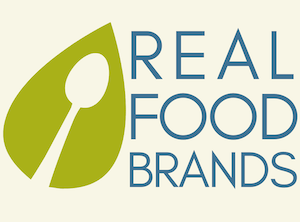When it comes to integrated marketing planning for food companies, I like to say 1+1=3 because the sum is greater than the parts when all your tactics are working together based on your strategy.
Sometimes companies think their marketing strategy is all about quantity, but then 1 always just equals 1. Anybody can put a bunch of Facebook or Instagram posts out there, but unless there is a plan for who those posts are speaking to and what action you want them to take to move you closer to your goals, it’s just time & money out the door while you wait and hope someone responds.
Business owners come to me varying levels of formalized plans, but the most successful understand that when you have a documented marketing plan in place it will make your marketing investment more efficient and effective. It’s stressful to be working “just-in-time” and having a plan gives busy food and beverage company leaders the ability to better plan and allocate resources between their own time, their team’s time and leveraging outside experts.
Planning does not have to come at the expense of action. Have you heard the phrase “slow down to speed up”? It’s not always easy to want to do, but it’s so true in this case. This 6 Step Marketing Plan should only take a few hours and can fit on 1-2 pages of paper. I encourage you to post it on the wall to keep it top of mind every day. I often start it with a sketch on paper to get my initial thoughts out quickly as shown in the image, but then move to an online version for collaboration and updates.
Benefits of an Integrated Marketing Plan
- No more scrambling! While the plan doesn’t necessarily take work off your company’s plate, it streamlines it. Having a plan gives you structure for the upcoming months to make sure you are working on the right things with the limited resources you have. Many people find a sense of great relief from knowing what is happening, when and why.
- Divide and Conquer! Having a documented, integrated plan makes it makes it easier for you to identify what pieces of the plan can be done by you or your internal team and what can be outsourced to an agency or freelancer, a virtual assistant or some other external resource.
- Prioritization! If a new opportunity comes up, you have a litmus test to run the new idea past to see if/how it fits in the plan. If it’s not a good fit, ok to walk away this time.
Getting Started: Plans Must Be Rooted in Strategy
I can’t stress enough that your plan must be rooted in your brand strategy. Brand strategy goes beyond Mission, Vision and Values, but if you haven’t at least documented that for your business it’s important that you do because it will guide your marketing plans and messaging in a way that consistently delivers on your purpose and vision.
The Six Steps to Creating Your Integrated Marketing Plan
The main components of a marketing plan include the following:
- Business Objectives
Draw a box at the top of the page and label it Business goals. Write down 2-4 business goals for the year. These are the primary business goals you have set for the upcoming year. Hopefully you already have these defined, but if not written out, write them down here. Having your goals in writing where you can see them puts them within reach (literally and figuratively!)
You could decide to focus on revenue goals, profit goals, finding an investor to help fast track your growth, operational investments, making your first or next employee hire…this type of overarching business goal.
If you are not creating a marketing plan that will ultimately get you to your business objectives, what’s the point of spending all your time and money? You’ll be exhausted and you won’t have met your goals. So, jot those 2-4 goals down at the top of the page before moving on.
- Marketing Objective
Now draw another box directly below the Business Objectives and label it Marketing Objective. There are a lot of ways you can call out your marketing objectives, but let’s keep it simple. In food marketing, there are two primary ways to think about what your marketing needs to do:
- Increase buy rate, or how many times each customer buys your product in a certain time period.
- Market expansion, meaning what is your reach in terms of geographic distribution, online distribution or even engaging a new audience that has been untapped.
For newer food businesses, gaining distribution, or market expansion, is generally the primary goal. We are not necessarily talking about national distribution here, local or regional expansion is a worthy goal and it’s important to do well in one area before expanding and taking on too much too fast. Increasing buy rate generally comes in as a growth tool once you have an established some level of distribution and a customer base.
- Ideal Audience
Draw another box below the Marketing Objective box, and write Ideal Audience (or Customer Avatar, Perfect Person…whatever term you like to use).
This can be a summary of a longer exercise where you (hopefully) got very detailed about your ideal customer and where he or she shops, how old they are, if they are married, have kids, what they do for a job, where they like to eat, what drives their food purchasing decisions, view on health and so on.
In this box, include only the most defining factors when it comes to demographics, which are quantifiable things like age, family composition, geography, etc. and psychographics, or attitudes and behaviors. You can refer to your more detailed definition at any time, but we’re trying to keep this whole document to just a page or two.
If you have gone as far as naming your customer avatar and have a picture of him/her, include that name and picture here as well! You want to be reminded every day why you are doing all of this in the first place.
- Marketing Challenge
Now we’re moving on to the marketing challenge…this is fairly straightforward, but you may not have thought about it in quite this way before. What are the attitudes, beliefs or behaviors you need to change to make your ideal audience think AND take action?
Said differently, what are the potential objections your audience may have to your product, or maybe even your whole category? While the plan does need to address awareness if it’s lacking, try not to just say “they aren’t aware.” While this may be true, it goes deeper than that if you want to have this be an insightful part of your planning.
Imagine what hurdles they may have once they are aware, based on existing customers. Are there negative taste perceptions? Is your category so crowded that the number of choices is daunting? Is your product higher in sugar than some other products? Price? Not sure her kids will eat it? Maybe they are not sure how to use or prepare your food or beverage product?
- Marketing Strategies
Below the Marketing Challenge box, draw 3-5 boxes horizontally on the page. Now you’ll identify Marketing Strategies. Here you will identify 3-5 core strategies that will help unify your tactics to make sure you are connecting with your ideal consumers in a way that helps them move closer to wanting to buy your products.
So, if you have established some distribution and your marketing objective is to increase buy rate and the hurdle is that your idea audience may not know how to use your product, you might consider using the following strategies:
- Create awareness of the product benefits (why to even care about the category)
- Make it approachable and fun (a daily adventure within reach)
- Get them to try (help them see for themselves how good it tastes, how easy, etc)
- Nurture influencer relationships (build on trust they have with those they know wouldn’t lead them astray).
- Line extensions (bridge them to more familiar products & flavors)
- Marketing Tactics
This may be the part of a marketing plan where you would have started with in the past…but as you can see it actually comes after quite a bit of upfront work. Hopefully most of the prior pieces were already in place though, and Identifying and prioritizing tactics is where you’ll spend the bulk of your time.
Now that you’ve got the framework in place the decisions on the tactical plan should be easier because you can ask yourself if the tactics you are selecting will help you climb back up the ladder (aka boxes on the page) to meet your business objectives.
Draw a tall, rectangular box underneath each of the marketing strategies, but don’t write in them yet. Grab another piece of paper while you brainstorm which tactics support each strategy. Later you can fill in the boxes with your prioritized tactics.
Some tactical examples including emails (note: recognize that you can have a separate email list for consumers vs stakeholders, if you wish), creating your social media channels and strategy based on your above strategies, develop blog content calendar based on strategies, podcast guest appearances, in-store sampling, events/tradeshows, farmers markets (a great place to get first-hand customer feedback even if your company is well established!), packaging redesigns, coupon strategy, partnerships with other brands, collaborations with influences who reach your ideal audience, website optimizations to grow your email list, etc.
Just remember that after you brainstorm it’s important to sort through and prioritize based on how each will support your goals, without going outside of your budget. Write the final tactics that you want to prioritize in the Tactic boxes across the page. The list of possible tactics goes on and on. Put the tactics in the box under the strategy they support.
REMEMBER: Every strategy and tactic within this portion should ladder back up to helping the ideal audience overcome the marketing challenges so you can achieve your marketing goals and business objectives.
Next Steps
- Assess your plan. Does your prioritized list seem attainable based on your resources (time, team and the funds to invest in making it happen)? If you complete this plan, do you believe you will achieve your business objectives?
- After your 1-2 page plan is complete, the next step is to take this overview plan and turn it into tactical marketing plan or marketing calendar where you plot out exactly what tactics and message you plan to do, and when.
- Define what success looks like, along with how you will measure.
- Begin working with your team to refine and implement the plan.
If you want to hear me talk through all of this, you can check out The Real Food Brands Marketing Podcast Episode #6, coming soon.
Now, let’s go shake up shopping carts!
Katie
 Katie has 15+ years of experience in brand management and marketing across a range of popular brands from Fortune 500 consumer package goods companies to local startups. She has degrees in Marketing & Management from the University of Wisconsin – Madison School of Business and now, as an independent consultant, she is dedicated to helping local and natural food brands become category leaders in both philosophy and growth.
Katie has 15+ years of experience in brand management and marketing across a range of popular brands from Fortune 500 consumer package goods companies to local startups. She has degrees in Marketing & Management from the University of Wisconsin – Madison School of Business and now, as an independent consultant, she is dedicated to helping local and natural food brands become category leaders in both philosophy and growth.


